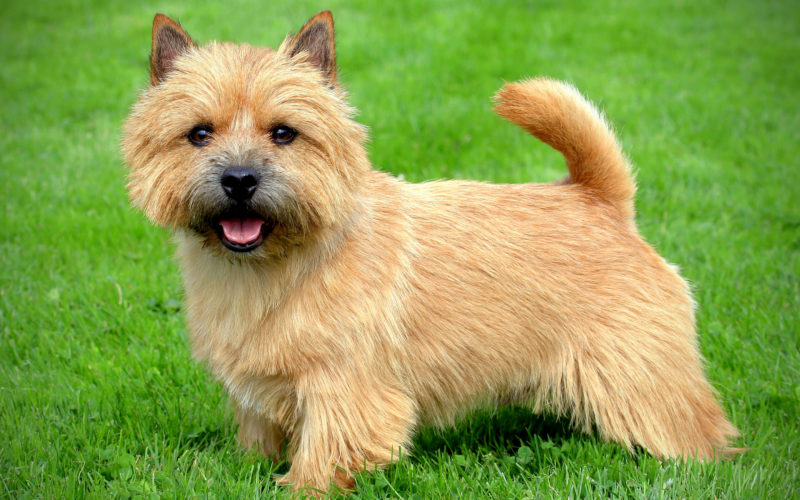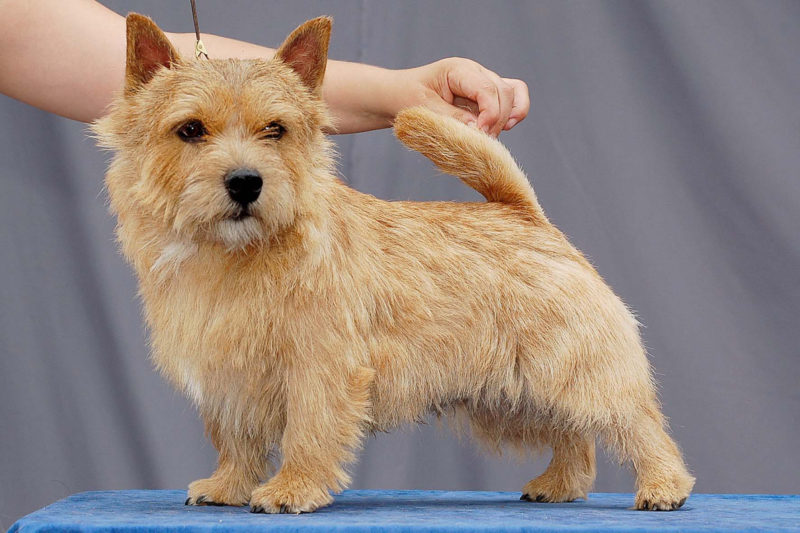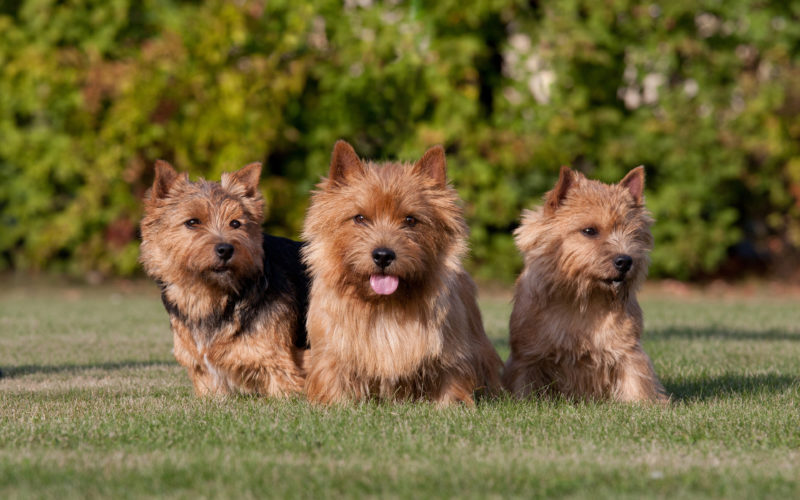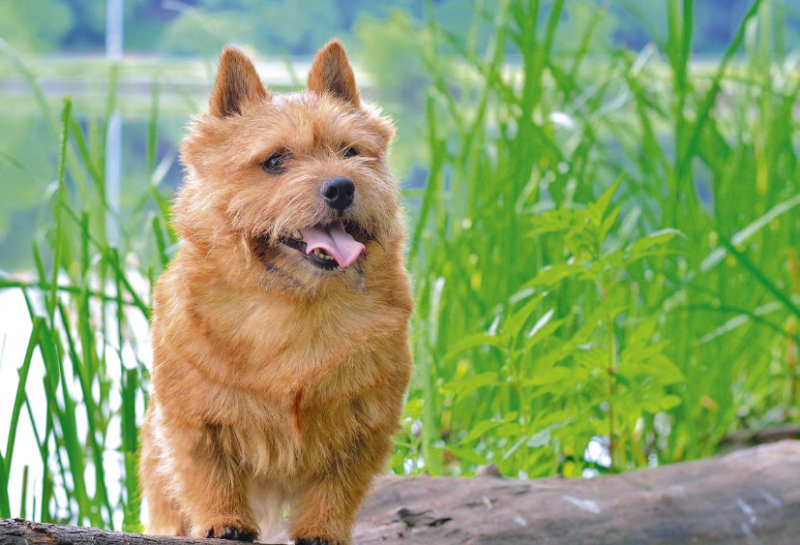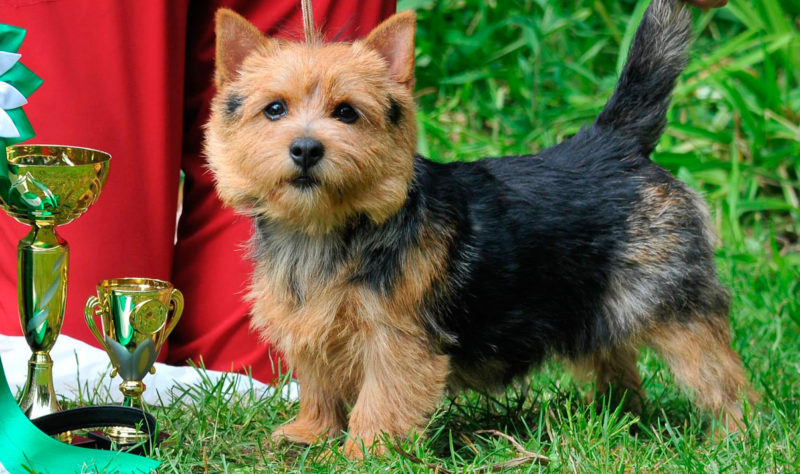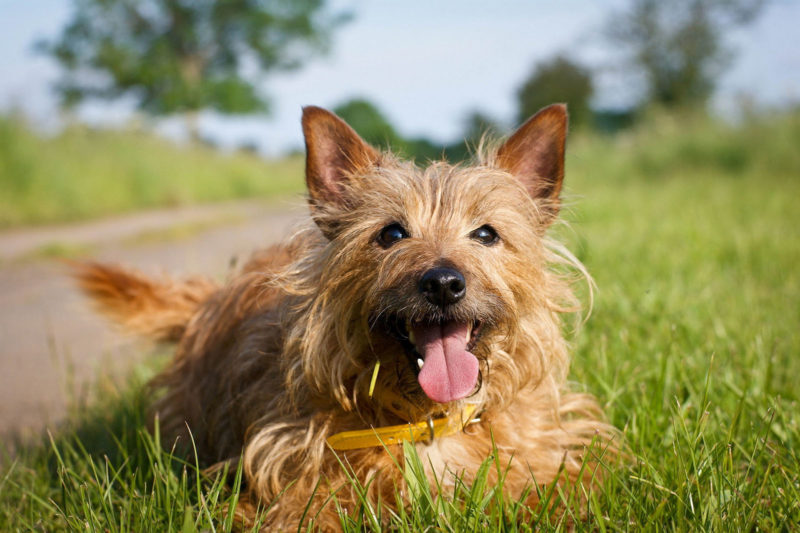A variety of modern canine breeds allows potential owners to choose almost any pet - from very tiny to truly huge. Lovers of small but active doggies will surely enjoy the charming Norwich Terrier. What should I know when going to the kennel for such a dog?
Material Content:
Breed description
Among the variety of varieties of terriers, one of the smallest is the active and voiced Norwich Terrier. The small size of this animal is combined with a strong, strong body and a brave disposition.
These miniature terriers have a very developed hunting instinct. And although their appearance involuntarily causes emotion, we should not forget that these dogs are courageous, moving animals with the habits of adventurers. Norwich is easy to train in various tricks and teams. These doggies are extremely energetic and active, and therefore recommend walking them at least 2 times a day.
It is interesting. Norwich are the closest relatives of the Norfolk. Representatives of these breeds are surprisingly similar to each other, but it is still impossible to mix them up. At the Norfolk Terrier, the ears are down, but at the Norwich, they fervently rush up.
Origin history
Modern farmers struggle with their main enemies - rats with the help of various poisons and chemicals. However, 200 years ago, a similar method of eliminating rodents was not available to the owners of farmland. In order to preserve the harvest, breeders bred a new breed of dogs, which, thanks to their small size, adroitly penetrated rat holes and dealt with pests.The people called such doggie "ratler", which literally means "rat hunter."
Dog breeders know these dogs under the name Norwich Terrier, since these animals were first bred at the end of the 19th century in the UK in the city of Norwich, Norfolk County. These miniature hunters were the result of crossing two breeds of dogs: the Irish Glen of Imaal and the English hunting terrier. Magnificent hunters, Norwegians quickly gained popularity among farmers.
The breed was registered by the English Kennel Club in 1932, and already in 1954, Norwich Terriers were recognized internationally.
Gradually, the need to persecute rats with dogs disappeared, and small terriers began to be bred as human home companions.
The nature and behavior of the Norwich Terrier
Despite its small size and positive hunting qualities, the character of the Norwich Terrier dog is not the easiest. These creatures are not only smart and smart, but also very cunning. The owner should always be on his guard and not give slack. Feeling the advantage, the little dog will certainly try to take a leading position in the family.
In general, the Norwich is a typical terrier, which means that he adopted all the basic qualities of this basic breed: nervousness and the habit of barking loudly combine with friendliness, high intelligence and innate caution.
It should be noted that the Norwich Terrier is still more of a “street" creature than all other representatives of the Terrier breed. Impressive hunting instincts, though drowned out in the last few decades, still make the Norwich quite emotional, and sometimes overly agile. In some cases, keeping such doggies on a leash can be a problem. Walking outside the house, a charming kid can remember his hunting past and be aggressive towards surrounding animals, and sometimes people. All this makes the Norwich Terrier a dog that is not suitable for all people.
In relation to children, the Norwich terrier is quite loyal and restrained, but only if the child respects the boundaries and respects the independent nature of the terrier. As for other pets, a Norwich can coexist with them only if he knew them from a puppy's age.
However, do not forget that such an animal can perceive rabbits, hamsters and other small rodents as an object for hunting.
Many dogs miss their owners very much, staying at home alone. In this regard, the Norwich Terrier is more persistent, and is able to be alone for short periods of time. Separation will not harm the nervous system of these doggies. From this point of view, small terriers are great for owners who can save time on their pet, but are not able to pay attention to it continuously.
Breed standard and puppy selection
The Norwich Terrier grows to medium and small sizes, reaching 26 cm at the withers, and their weight, on average, is 5 - 6 kg. The body structure of doggie is dense and compact. The physique of the Norwich is stocky, but proportional.
- The muzzle of a doggie has the form of an elongated wedge, the almond-shaped eyes are usually dark in color.
- The head is round and wide, triangular ears are pointed up.
- The limbs are strong, straight.
- The tail is straight, short, but can also be docked, approximately 2/3.
- The breed standard allows several varieties of Norwich coat color: black, red, wheat, grizzly, brown.
Black-skinned Norwich terriers are gaining more and more popularity - the wool on the back has a dark shade, and on the stomach and paws it is wheaten or brown.
The coat on the ears and head of the Norwich is short, a kind of wool collar forms on the legs, neck and shoulders.
It is interesting. White spots on the coat of the Norwich Terrier are considered marriage.But the standard allows these dogs to have scars indicating the victories of the dog on the hunt.
Norwich terrier puppies are a welcome commodity, because this breed of dog is considered quite rare, and therefore expensive.
Choosing a baby Norwich, you should consider some recommendations:
- the bite should be scissor-like;
- erect ears are pointed at the tips;
- wide neck gently passes to the shoulders;
- the tail can be straight or cropped.
Paws are short, forward to move. The hind limbs are slightly pulled back. If they are located directly under the body, this may indicate bad genetics or underdevelopment.
Tip. Be sure to see at least one of the parents of a potential pet and assess the degree of its compliance with the breed standard. Particular attention should be paid to the general proportions of the body, the setting of the ears and the bending of the tail. These details are of particular importance for those puppies who should subsequently become exhibitors. The puppy should be similar to its parents at the age of 3 - 4 months.
Features of keeping a dog
The small dimensions of the Norwich terrier allow him to get along perfectly in the small space of the apartment. However, one should take into account the tendency of these doggie to active pastime. Home Norwegians should certainly be provided with physical activity, as well as time to systematic walks with the pet.
In the dwelling, it is worth taking the corner to the Norwegians, in which there will be a sleeping place, doggie toys, as well as bowls with food and water.
Care, health and feeding
Norwich Terrier is a breed of dogs that are not particularly fastidious in terms of grooming. It is enough to comb them once a week and more often during molting. In general, home Norwegians are not prone to severe tangles and pollution of wool, and therefore they should be bathed only as necessary.
Keeping the dog’s coat clean will help trimming the Norwich terrier - this procedure involves plucking out dead areas of the animal’s coat. As a result, you can avoid blocking the pores of the skin of the pet, which provokes the old coat. The plucking carried out with the utmost care allows you to make the appearance of the hair of the dogs beautiful and neat, preventing tangling of the hairs.
Trimming can be entrusted to a professional or carried out independently at home. Although at first glance this procedure may seem simple, it requires some skills and, of course, the owner's practice in these matters. It is very important to understand what kind of wool is to be plucked. Therefore, the first few procedures should be entrusted to a professional and carefully monitor his actions.
In general, Norwich terriers are dog breeds that are not very prone to genetic diseases.
However, some diseases can affect them, for example:
- epilepsy;
- tracheal collapse;
- elongated soft palate.
To prevent possible health problems of the Norwich, you should carry out systematic examinations of the pet at the veterinarian, as well as take care of the timely vaccination of the dog.
In terms of nutrition, the Norwich Terrier is also not particularly whimsical. You can cook your own food or purchase ready-made food in the store. Speaking of dog food, it is best to choose premium products.
From natural products to Norwich you can offer:
- meat (beef, boiled bird);
- cereals (buckwheat, oatmeal, rice);
- vegetables fruits:
- dairy products (cottage cheese and kefir).
Attention! Pork should be excluded from the diet of small terriers, since this product is considered very difficult for the digestive system of the animal.
Parenting and training
Due to the difficult nature of the Norwich terriers require a special approach to training and training.And although at first glance such a task may seem difficult, with the right approach, the training of this animal will not become too tiring.
Active and inquisitive, the Norwich does not always seek to obey the requirements of the owner. To overcome his natural obstinacy, classes should be conducted in a playful way. Having become involved in fun, the dog will itself require the continuation of a fun game.
Raise a small terrier should be from the first days of his appearance in the home. The dog must clearly know its place and carry out the commands of the owner.
Of course, a pet should be encouraged for its success with praise and goodies. The Norwich should be scolded solely for serious misconduct, and certainly physical force should not be applied to these dogs.
The mobile and energetic Norwich, as a rule, independently create most of the physical activities for themselves, the owner can only supplement them with systematic walks. So, small terriers are very fond of games, including, for example, tug of war. The owner should not be surprised if, during the game, the miniature doggie begins to show discontent and aggression - these dogs are prone to leadership and love to win.
The lesson should last about an hour, but at the request of the pet it can be extended. Engage with Norwich should be every two days, achieving maximum animal obedience. A well-bred dog will not bark at people passing by, as well as rush into vehicles or animals.
Pros and cons of Norwich Terrier
The indisputable advantage of the content in the house of dogs of Norwich terriers is their following qualities:
- the ability to get along with children and animals;
- high intelligence, quick wit, quick team learning;
- good health;
- excellent survival in the walls of the apartment and the ability to adapt to new conditions.
At the same time, it has a breed and a number of minuses, among which;
- restless disposition, in some cases - aggression;
- tendency to rush at other animals;
- the need to purchase exclusively high-quality feeds, which are often expensive;
- the difficulty of acquiring puppies in Russia
The compact and energetic Norwich Terrier is an excellent companion for owners who value dogs with a friendly and cheerful disposition. This small, but incredibly active and charming creature will not let its owner get bored for a minute. The small size of the dog allows her to get along well within even the smallest home.


